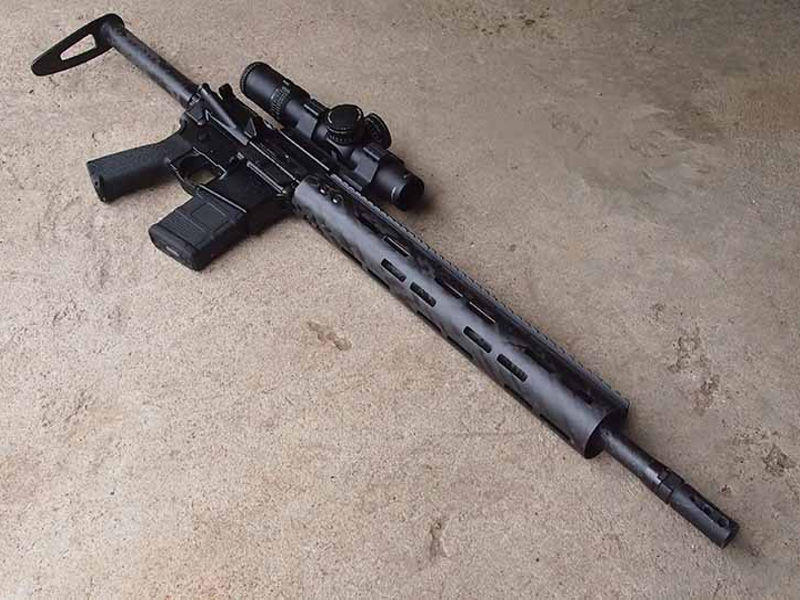The exact number of parts in an AR15 rifle depends on the model. Furthermore, some have more than others, but generally speaking, an AR15 has approximately 100 parts. This includes everything from big parts like the upper and lower receivers to tiny components like detent springs (which all of us will accidentally launch into orbit at some point). If you’ve ever wondered what all those parts are called, or if you’re looking for a good AR15 parts diagram, we’re here for you; if you’ve never wondered, we’re here for you anyway.

The AR-15 platform could easily be described as America’s favorite gun. Did you know it has around 100 parts? (Photo credit: Team Never Quit)
AR15 Parts Diagram: Rifle Anatomy
AR15 platform rifles can be broken down into two parts (literally and figuratively): the upper receiver and the lower receiver. The upper attaches to the barrel at its front and holds pieces like the bolt carrier group; the lower attaches to the stock at its rearward portion and contains parts like the trigger. Receivers are joined together using the takedown pin and pivot pin.
For simplicity’s sake, let’s break down AR-15 anatomy by the receiver type. In other words, brief explanations regarding what various parts do will be included with varying degrees of detail since a lot don’t need more explaining than “it’s a spring.â€

An AR15 parts diagram from Black Rifle Depot.
AR-15 Upper Receiver
- Upper Receiver (Stripped)
- Charging handle: Located at the rearward, upper portion of the upper receiver and used to draw back the bolt carrier group to load or clear a round of ammunition. Typically sold as a complete assembly rather than broken down into its parts.
- Charging handle latch
- Charging handle latch spring
- Charging handle latch roll pin
- Forward assist: Located on the right-hand side of the upper receiver on models that include it, this part facilitates fully seating or chambering a round of ammunition. As the name suggests, it shifts the cartridge forward.
- Forward assist pawl
- Forward assist pawl detent
- Forward assist pawl detent spring
- Forward assist retaining pin
- Pawl pin
- Charging handle: Located at the rearward, upper portion of the upper receiver and used to draw back the bolt carrier group to load or clear a round of ammunition. Typically sold as a complete assembly rather than broken down into its parts.

AR-15 ejection port covers can be marked by caliber to save confusion. (Photo credit: Wilson Combat)
-
-
-
- Ejection port cover: Also called the dust cover, this part moves on hinges and is designed to cover the ejection port of the upper receiver to keep dirt and debris out of the action of the AR-15. Some models of AR-15 do not have ejection port covers, but most do.
- Ejection port cover pin
- Ejection port cover pin retaining ring
- Ejection port cover spring
- Barrel assembly: This term refers to the entire barrel assembly. The specific parts included depending on what type of AR-15 it is; for example, a retro model or a more modern design with a free-floating handguard. Parts needed to attach the barrel to the upper receiver vary by handguard style.
- Barrel (usually between 16 inches and 24 inches; any barrel shorter than 16 inches on an AR-15 platform rifle must have a tax stamp to remain legal under the NFA)
- Barrel nut
- Barrel indexing pin
- Ejection port cover: Also called the dust cover, this part moves on hinges and is designed to cover the ejection port of the upper receiver to keep dirt and debris out of the action of the AR-15. Some models of AR-15 do not have ejection port covers, but most do.
-
-
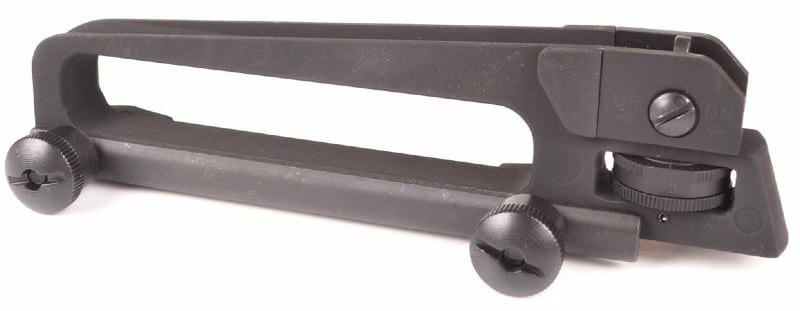
A carry handle assembly for an AR-15. (Photo credit: Ozark Armament)
-
-
-
-
- Carry handle (typically used only with drop-in handguards on retro builds and sold as a complete assembly; the rear sight is part of the carry handle on these models)
- Ball-bearing
- Clamping bar
- Cross bolt
- Elevation spring
- Index elevation
- Index screw
- Index spring
- Knob elevation
- Rear sight aperture
- Rear sight ball bearing
- Rear sight base
- Rear sight elevation spring pin
- Rear sight flat spring
- Rear sight helical spring
- Rear sight windage knob
- Rear sight windage knob pin
- Rear sight windage screw
- Thumb nut assembly
- Crush washer
- Carry handle (typically used only with drop-in handguards on retro builds and sold as a complete assembly; the rear sight is part of the carry handle on these models)
-
-
-

An example of a delta ring assembly for a drop-in handguard on an AR-15. (Photo credit: Leapers UTG)
-
-
-
-
- Delta ring (specific to drop-in handguards, meaning the barrel will not be free-floated)
- Handguard (drop-in or free-floating, may have a full-length rail or none at all)
- Front and rear sights (fixed, folding, and so on)
- Muzzle device (muzzle break, thread protector, flash hider, etc.)
- Gas tube (varies in length and must match length barrel is made to use)
- Gas tube roll pin
- Gas block (might be adjustable, but not necessarily)
- Gas block set screws
-
-
-
-
-
-
- Bolt Carrier Group (“BCG†is the acronym; these are usually sold as complete assemblies, but it is possible to purchase individual components, and it may even be necessary if, for example, the gas rings wear out)
- Bolt
- Bolt carrier
- Bolt carrier key
- Bolt carrier key screw
- Cam Pin
- Ejector
- Ejector roll pin
- Ejector spring
- Extractor
- Extractor pin
- Extractor roll pin
- Extractor spring
- Firing pin
- Firing pin retaining pin
- Gas rings
- Bolt Carrier Group (“BCG†is the acronym; these are usually sold as complete assemblies, but it is possible to purchase individual components, and it may even be necessary if, for example, the gas rings wear out)
-
-
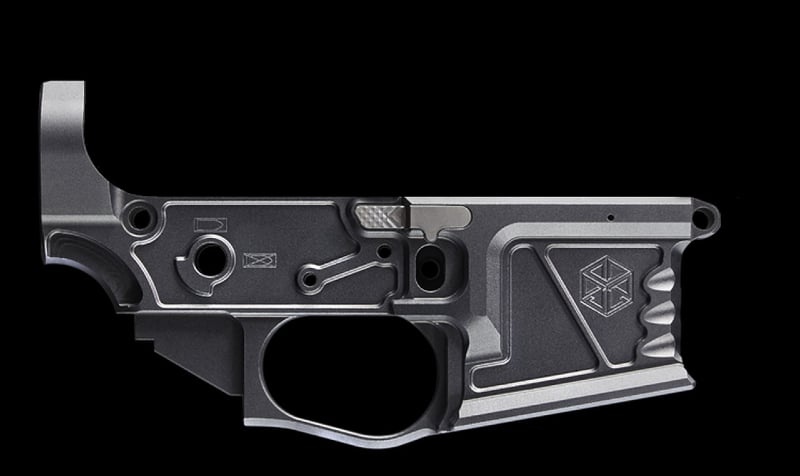
A stripped AR-15 lower receiver. (Photo credit: JL Billet)
Lower receiver (Stripped)
-
- Lower Parts Kit (typically, these numerous tiny components are sold in kits, but they are available individually as well)
- Bolt catch
- Bolt catch plunger
- Bolt catch roll pin
- Bolt catch spring
- Buffer retainer
- Buffer retainer spring
- Disconnector
- Disconnector spring
- Hammer
- Hammer pin
- Hammer spring
- Magazine catch
- Magazine catch button
- Magazine catch spring
- Pistol grip
- Pistol grip lock washer
- Pistol grip screw
- Pivot pin
- Lower Parts Kit (typically, these numerous tiny components are sold in kits, but they are available individually as well)
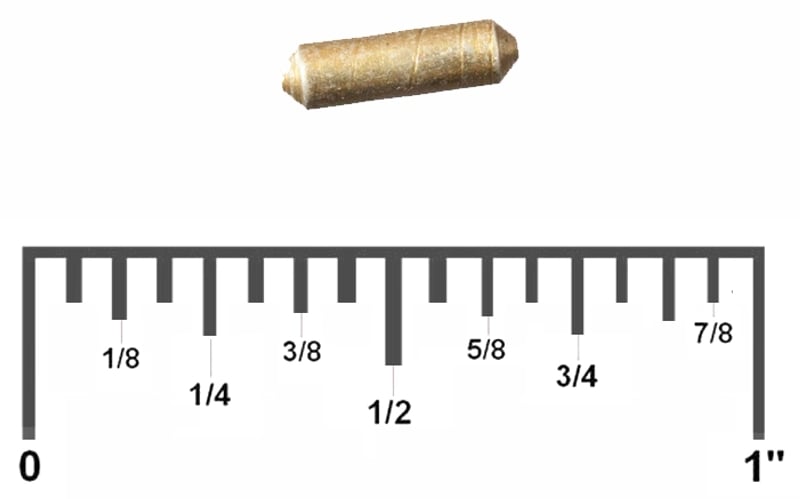
Detent pins are the bane of the existence of many gun owners. They tend to disappear. (Photo credit: Bayou Gun Runner)
-
-
- Pivot pin detent
- Pivot pin detent spring
- Selector switch
- Selector detent
- Selector detent spring
- Takedown pin
- Takedown pin detent
- Takedown pin detent spring
- Trigger (drop-in cassette style or individual components that must be assembled; various individual trigger parts are included in lower parts kits)
- Trigger guard (not all lower receivers have built-in trigger guards)
- Trigger guard roll pin
- Trigger pin
- Trigger spring
-
-
- Stock (fixed or adjustable, the part of the AR-15 mounted to the shooter’s shoulder)
- Stock (adjustable stocks may include features such as telescoping, adjustable cheek risers, and so on; fixed stocks may consist of spacers to adjust the length of pull)
- Buffer tube
- Buffer spring (rifle buffer springs have 41 to 43 coils and carbine buffer springs have 37 to 39 coils)
- Buffer weight
- Castle nut
- Receiver end plate
- Receiver extension
- Receiver extension nut
- Stock (fixed or adjustable, the part of the AR-15 mounted to the shooter’s shoulder)
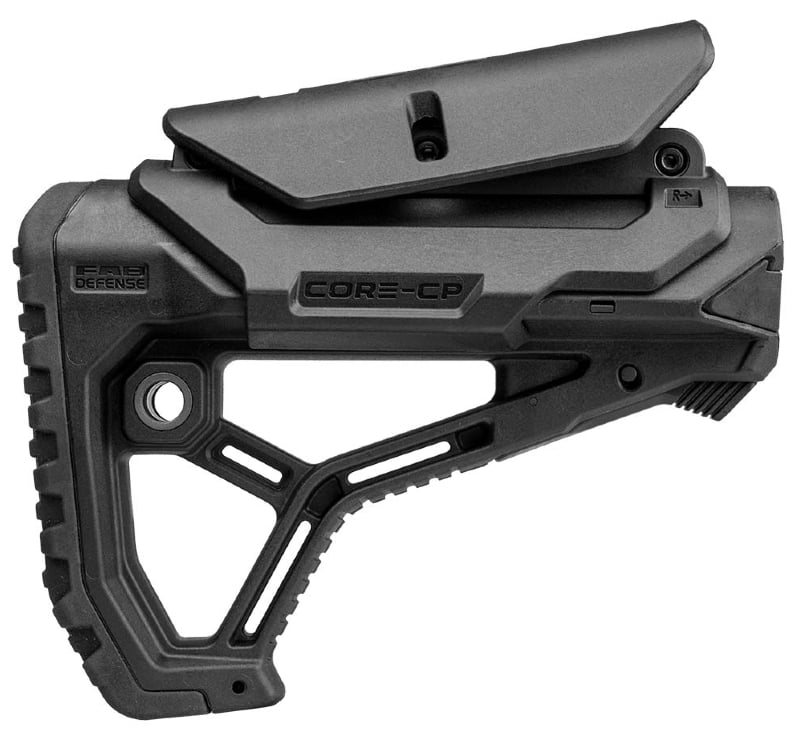
There are many options on the market for AR-15 stocks, whether you’re building a gun or want to upgrade your factory model. (Photo credit: Fab Defense)
-
- Miscellaneous aftermarket and other parts:
- Bipod
- Brass catcher
- Foregrip
- Laser
- Magazine
- Optics (rifle scope or red dot sight)
- Sling
- Weapon mounted lights (WML)
- Miscellaneous aftermarket and other parts:
Do you have any comments or questions about AR-15 parts? Drop them in the comment section below.
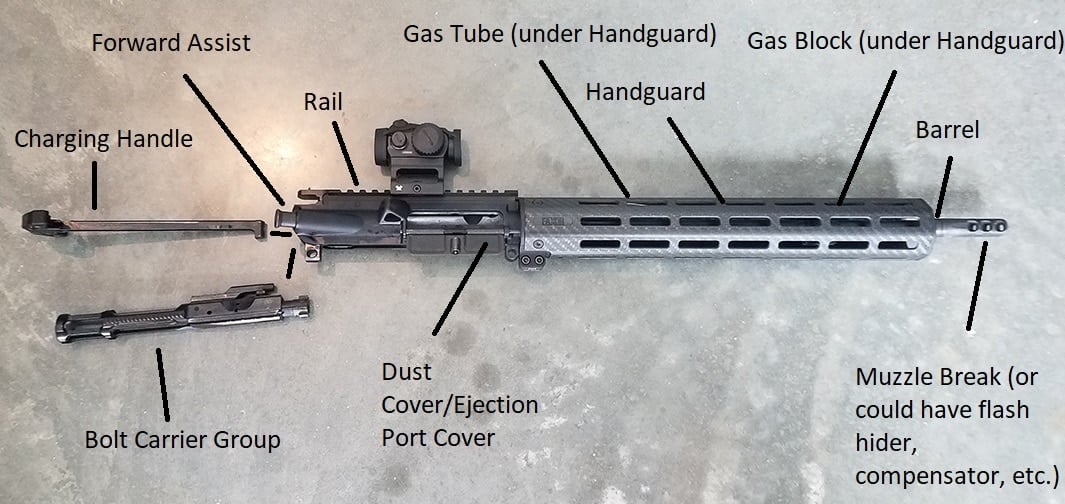
Another AR15 parts diagram series: this one’s from GunPros.com.

A diagram of an AR15 rifle’s anatomy via gunpros.com.
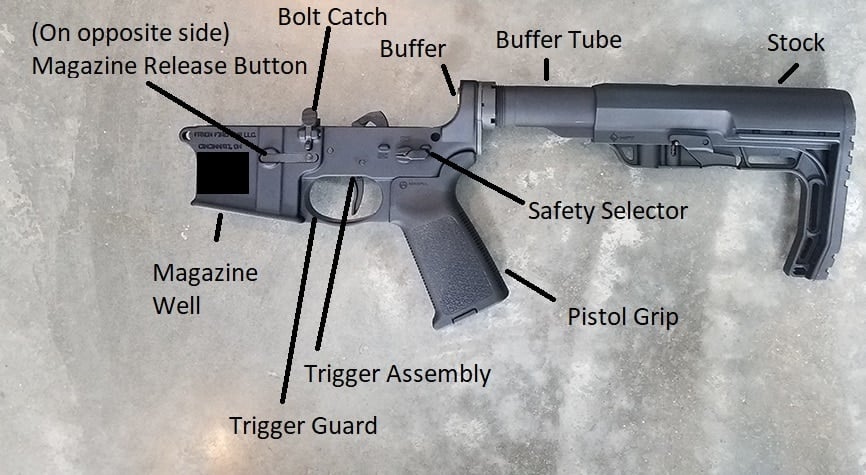
Lower receiver and other parts from the gunpros.com AR15 parts diagram.

